
TARGET 130116
A KYRGYZSTANI SHEEP RANCH
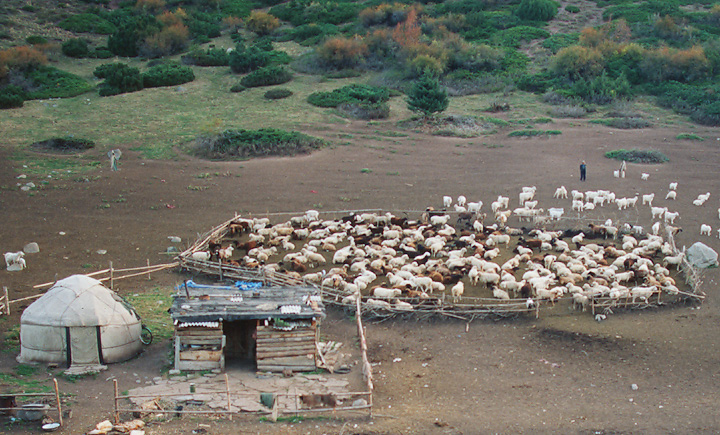
NOTE: If you are a beginning or intermediate level remote viewer, then the exact Kyrgyz sheep ranch shown above is your target for this week. Your task was to simply describe it, giving as much detail as you can. The history, customs, politics and complexities of sheep raising in Kyrgyzstan is very intricate and unlike sheep raising almost anywhere in the world. All of that has a strong affect on this ranch, but finding that information is left for the advanced-level and professional level remote viewers, and feedback for that information will be found in the links at the bottom of this page.
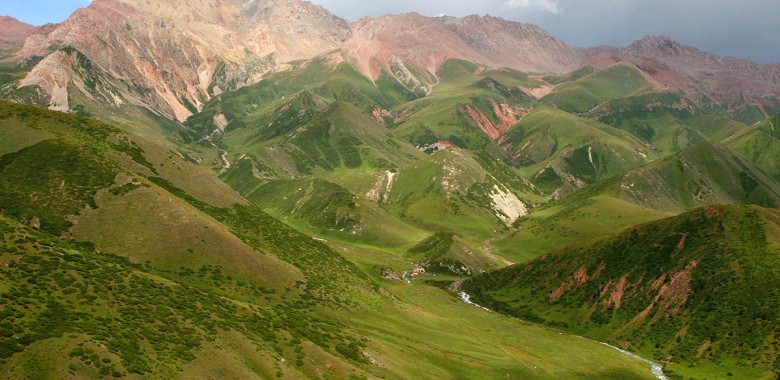
The general location
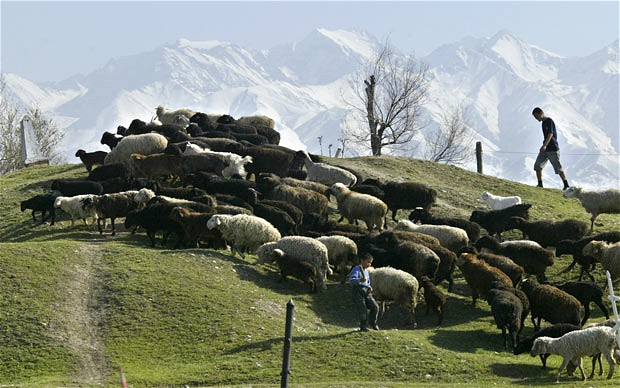
A relatively flat area
The location is a relatively flat valley in a very mountainous area at a high altitude. In fact, Kyrgyzstan is often called, "The roof of the world". Kyrgyzstan has 88 major mountain ranges, making up about more than 70 percent of the country’s territory. More than 60 percent of its people live in these very rural mountainous areas, mostly in poverty-level conditions, and mostly raising livestock.

A proud Kyrgyz family and their home.
The round-topped structure on the left of the top picture, like the one shown here with the proud family that calls it home, is a "Yurt". It is matted wool stretched over a wooden frame. The inside is a rug over a dirt floor, with portable furniture that can be easily moved when it is time to move the flocks. There is no electricity or piped-in water, so their home is made comfortable in the traditional ways: Heating is accomplished by burning sheep manure. Lighting is by lamps burning sheep fat. Food is largely vegetables, sheep meat and milk from their sheep, cows, and horses. The cooking stove burns either collected wood or sheep manure.
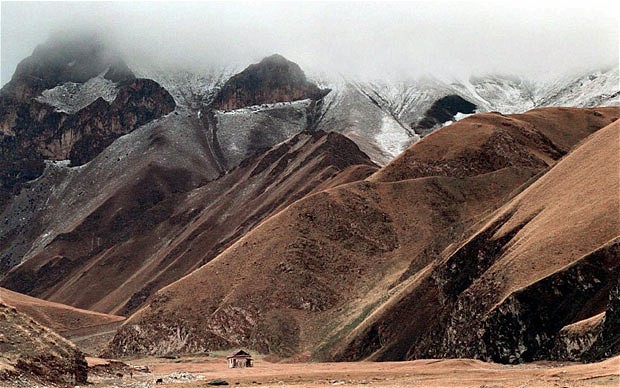
The high mountains have drastic weather changes
Although the Kurgiz sheep herders are somewhat namadic, in modern times they ahve built permanent structures, as well (also shown in the top picture), since the government now decides the areas where each family is allowed to graze their flocks. When the seasons change, making one spot unfit for their flocks, their flock, home, and possessions will be moved greener pastures.
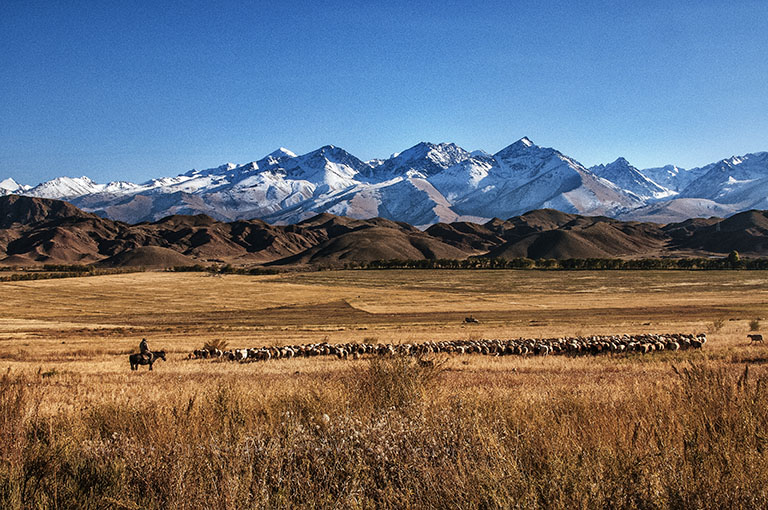
time to move the flocks
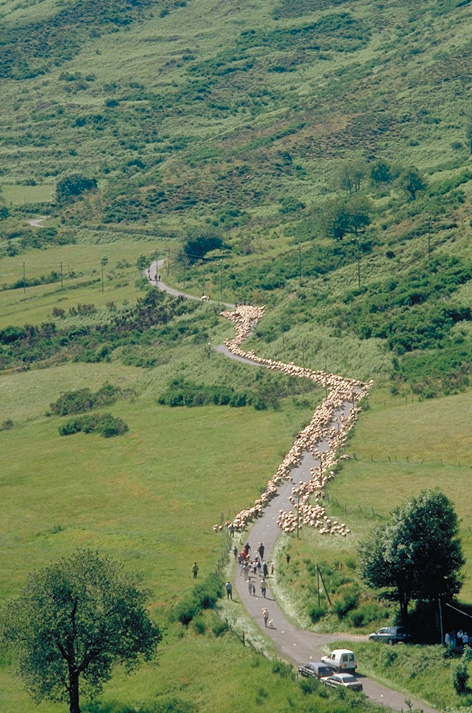
To lower, greener pastures
This movement of the flock is called "transhumance"
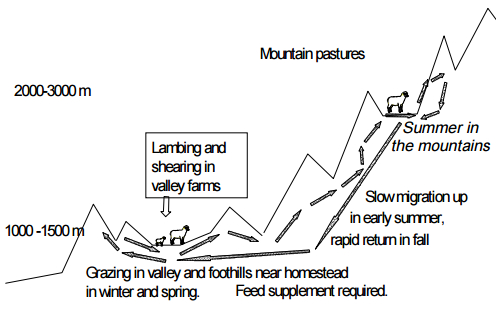
Transhumance
The base camps or fixed settlements of most herders are located in the narrow valleys in the low mountains, around 1000 to 2000 meters (3200 to 6500 feet). During the spring and autumn seasons animals are generally kept near the sheepfolds in the middle or lower elevation areas (as seen in the top picture). They are grazed during the day but are brought home at night, as predators are fairly common in the highlands. At higher altitudes, the dangers are not so severe.
Transhumance consists of:
1 A settled period in winter camps, when animals graze (grasses and shrubs)along the river valleys below the forest zone, and are fed supplementary feed in sheepfolds (November to mid April). (top picture)
2 Spring migration to the summer pasture (jailoo) above the tree zone.
3 A short stationary period in the early summer pasture (June to mid July).
4 Migration in the summer (highland) pasture during July and August.
5 Slow migration over improved fall pasture until mid October.
6 Rapid migration back to winter camps.
FEEDBACK MAP
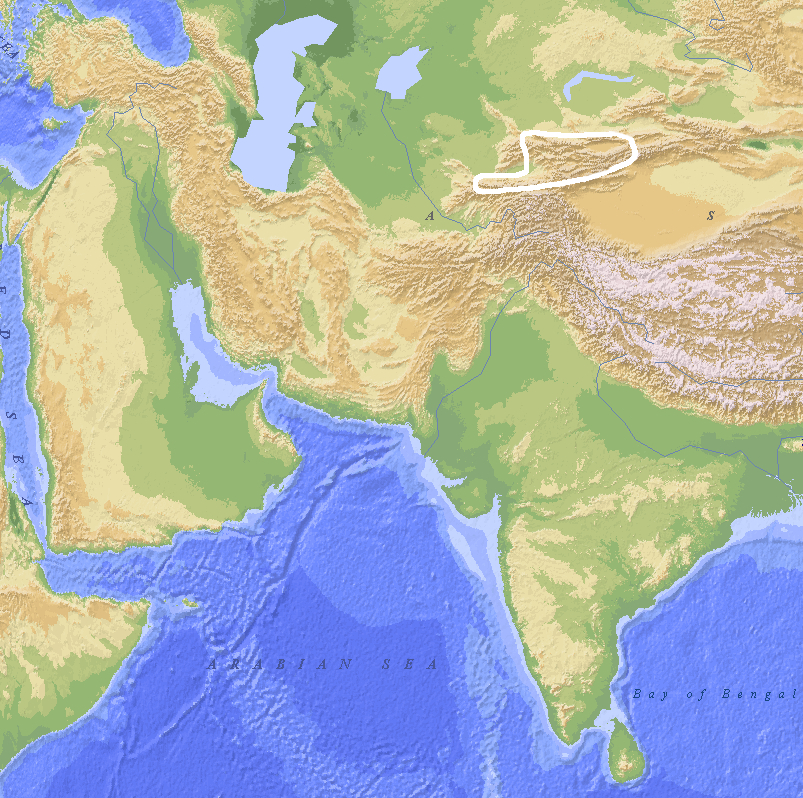
Note: Since the location of the tasked site (top picture) moves with the seasons and from year to year, the feedback for the map dowsing simply shows the location of the entire country of Kyrgyzstan. The location when you do the viewing will be somewhere within those borders.
If you got impressions for which this feedback is insufficient, more information,
pictures and videos can be found at the following web sites:
Lonely Planet website
Paper: THE KYRGYZ SHEEP HERDERS AT A CROSSROADS
Wikipedia - Agriculture in Kyrgyzstan
Kyrgyzstan Pasture/Forage Resource Profiles
Many thanks to Teresa Frish for slelecting this target for the Wednesday night free webinars she holds on a monthly basis. We at PSI use the targets she selects on this day so viewers will not wind up getting two different targets with the same set of coordinates. You can sign up for these free webinars at her web page under the option, "Online Classes & Discussions". Videos of all of Teresa's webinars are available on YouTube